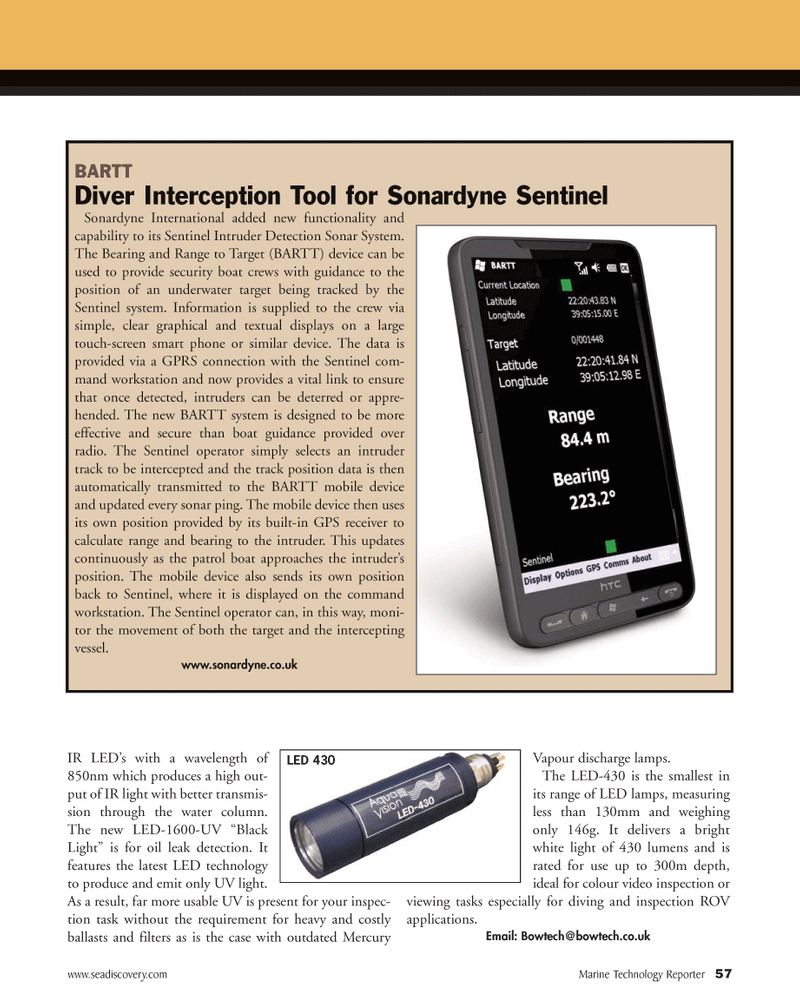
Page 57: of Marine Technology Magazine (November 2010)
Fresh Water Monitoring and Sensors(lakes, rivers, reservoirs)
Read this page in Pdf, Flash or Html5 edition of November 2010 Marine Technology Magazine
www.seadiscovery.com Marine Technology Reporter 57
IR LED’s with a wavelength of 850nm which produces a high out- put of IR light with better transmis- sion through the water column.
The new LED-1600-UV “Black
Light” is for oil leak detection. It features the latest LED technology to produce and emit only UV light.
As a result, far more usable UV is present for your inspec- tion task without the requirement for heavy and costly ballasts and filters as is the case with outdated Mercury
Vapour discharge lamps.
The LED-430 is the smallest in its range of LED lamps, measuring less than 130mm and weighing only 146g. It delivers a bright white light of 430 lumens and is rated for use up to 300m depth, ideal for colour video inspection or viewing tasks especially for diving and inspection ROV applications.
Email: Bowtech@ bowtech.co.uk
BARTT
Diver Interception Tool for Sonardyne Sentinel
Sonardyne International added new functionality and capability to its Sentinel Intruder Detection Sonar System.
The Bearing and Range to Target (BARTT) device can be used to provide security boat crews with guidance to the position of an underwater target being tracked by the
Sentinel system. Information is supplied to the crew via simple, clear graphical and textual displays on a large touch-screen smart phone or similar device. The data is provided via a GPRS connection with the Sentinel com- mand workstation and now provides a vital link to ensure that once detected, intruders can be deterred or appre- hended. The new BARTT system is designed to be more effective and secure than boat guidance provided over radio. The Sentinel operator simply selects an intruder track to be intercepted and the track position data is then automatically transmitted to the BARTT mobile device and updated every sonar ping. The mobile device then uses its own position provided by its built-in GPS receiver to calculate range and bearing to the intruder. This updates continuously as the patrol boat approaches the intruder’s position. The mobile device also sends its own position back to Sentinel, where it is displayed on the command workstation. The Sentinel operator can, in this way, moni- tor the movement of both the target and the intercepting vessel. www.sonardyne.co.uk
LED 430

 56
56

 58
58
